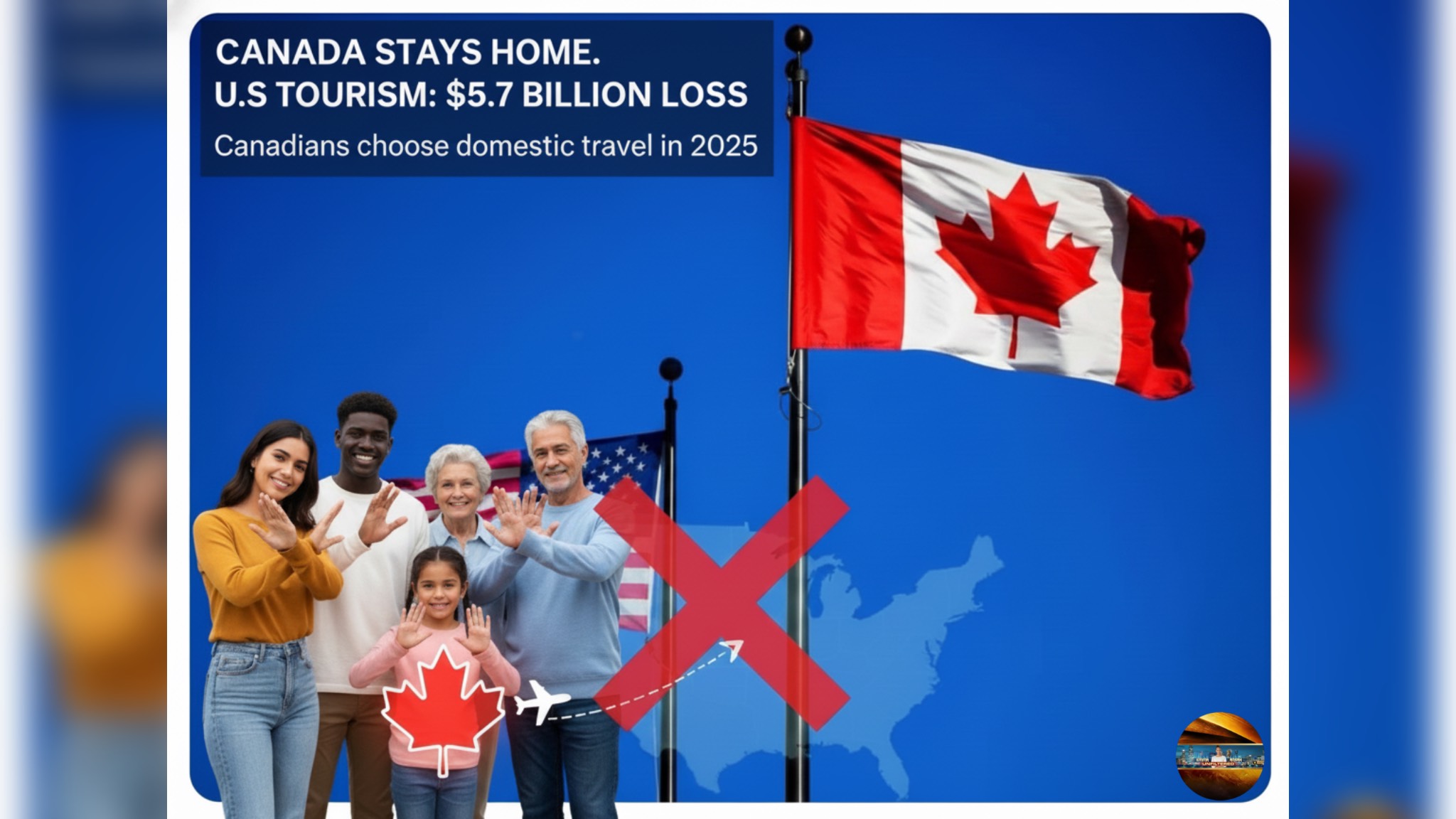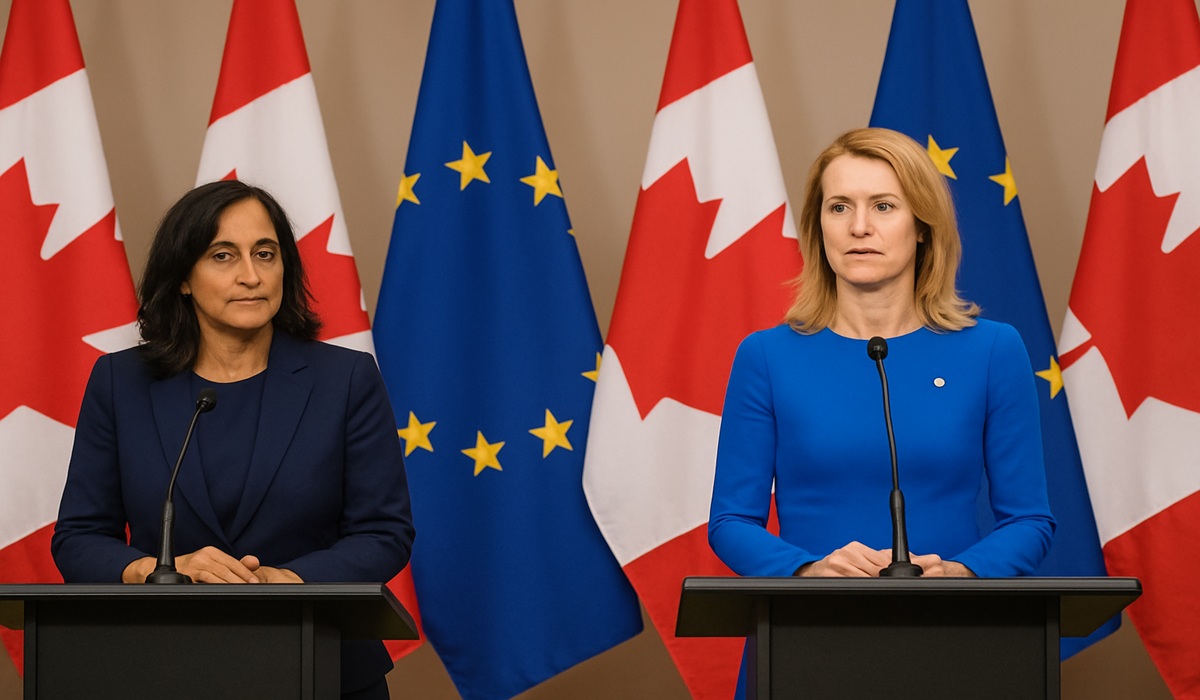Canada Says “Not This Year, U.S.” And It Could Cost Uncle Sam $5.7 Billion
- Emma Ansah
- Canada
- November 17, 2025

In what’s being called a de facto travel boycott, Canadians are laying off their U.S. vacation plans and the U.S. economy is bracing for a major blow. The U.S. Travel Association projects a $5.7 billion drop in revenue, largely because our people are staying home.
It’s not because we don’t want to go. Believe me, plenty of us would love to road-trip down to Florida, hit up New York, or go shopping in Chicago. But something has shifted. There’s real anger, real fear and real policy that’s making folks think twice.
What’s Driving the Dip
1. Tariffs and Tension
It’s not just political theatre, new U.S. tariffs have stung. Canadians see this as punitive, and it’s made border-visiting feel less like a vacation and more like a statement. Trade tensions are peeling away trust.
2. A Bitter Currency
The Canadian dollar is weak against the U.S. greenback, making everything more expensive once you cross the border. When your travel dollar doesn’t stretch, why risk it?
3. Facial Scans for the Next 75 Years
Starting December 26, 2025, a new U.S. Department of Homeland Security rule will require all non-U.S. citizens including Canadians, to have their photo taken both when entering and exiting the country.
Even more chilling: those biometric images may be stored for up to 75 years in a DHS database. For some, that’s a total breach of privacy boundary.
4. The Price Tag of Uncertainty
There’s a trust issue. Border anxiety is real. People worry about detainments, visa overreaches, or just being uncertain of what greeting they’ll get when they cross. Travel consultants say clients aren’t just canceling, they’re forgoing booking entirely, or shifting to destinations like Mexico, Europe, or staying in Canada.
The Numbers Don’t Lie
- According to Statistics Canada, in April 2025, Canadian return trips from the U.S. dropped 35.2% by car and 19.9% by air compared to April 2024.
- More broadly, Canadian-resident flights to the U.S. have declined sharply: year-over-year air returns fell by 14.0% in April and by 24.2% in May.
- Meanwhile, the U.S., which once relied heavily on Canadian tourism, is feeling the pinch. The projected $5.7 billion shortfall comes as part of a 3.2% forecast decline in international tourism spending.
But Here’s the Thing: Canada Still Wants In
Let’s be crystal: most Canadians haven’t burned the bridge permanently. We’d love to visit our friends, see the sights, or shop in U.S. outlet malls. But we’re rethinking the cost, the risk, and what travel to the U.S. has become in this political climate.
Some are choosing to stay closer to home, a win for Canadian tourism. The Conference Board of Canada estimates this shift could channel billions back into our own provinces. Others are jetting off to Mexico, Europe, or elsewhere just to avoid the political baggage.
Bigger Than Dollars
This isn’t just about lost spending. It’s about a changing relationship, one where travel, once taken for granted, has become fraught with political meaning. The $5.7 billion number? That’s real money lost to U.S. businesses, hotels, restaurants, border towns. But for Canadians, the choice to stay home is part protest, part self-preservation.
In a way, Canada is saying: We still love you, U.S., but you’re not making it easy right now. And when an entire country’s tourism mood shifts overnight, it’s a geopolitical signal.








